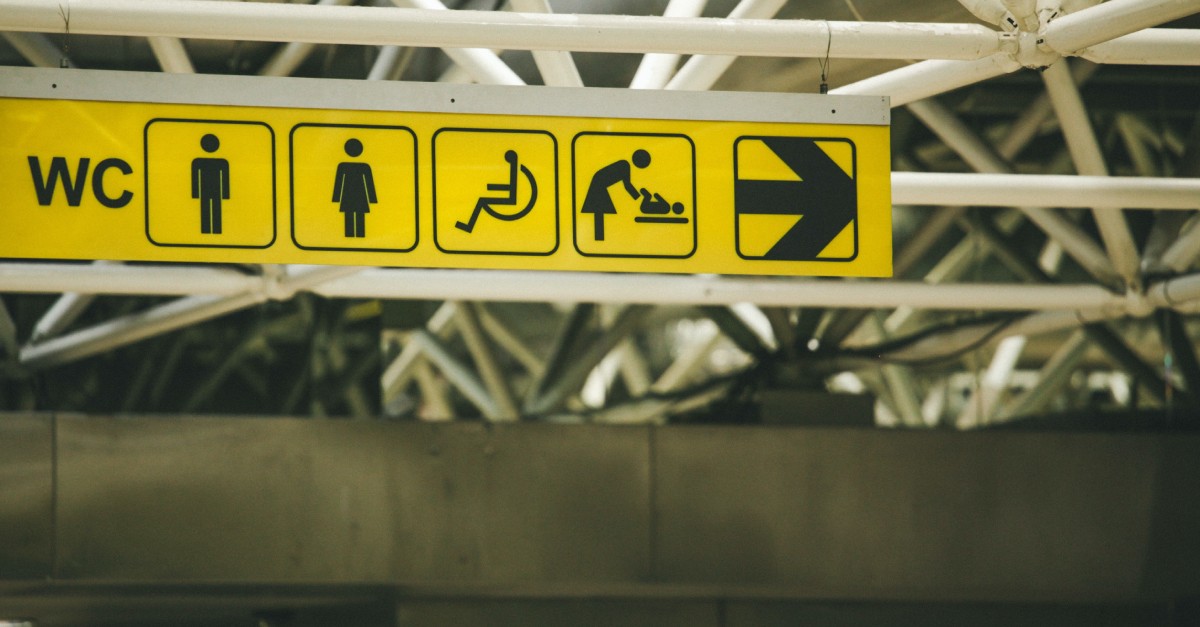This is how we're advocating for better public toilet accessibility
9 May 2022 | By: Newcastle University | 2 min read
In our latest blog, Professor Janice McLaughlin outlines how our research and partnerships with disability and carer organisations is making the case for improved accessibility, and changing the way policymakers think about inclusivity.
Having access to public toilets is a right that many take for granted.
For disabled people and their carers, the lack of appropriate facilities can prevent them from even leaving their home, which only adds to their isolation from wider society.
Almost 14 million people in the UK have some form of disability. Newcastle University research is being used by local authorities to make public toilets more accessible for disabled people.
Highlighting the realities of life as a disabled person
Since 2017, we have been working with Carers Northumberland and other disability and support groups to better understand how the lack of adequate toilet provision affects disabled people and their carers.
Together, we consulted carers and disabled people about what they thought contributed to their social exclusion.
Some of the participants in the research said that they had often been forced to return home or were prevented from leaving the house in the first instance by the lack of appropriate public toilets.
Others talked about the negative attitudes they had encountered from members of the public, who had challenged why they had used an accessible toilet when their disability wasn’t obvious.
Many commented on unclean or poorly equipped facilities. A common example was families changing their children on the floor due to lack of appropriate equipment. People stressed the need for more - and better signposted – publicly provided accessible toilets.
Introducing Nowhere To Go
This led to the development of Nowhere To Go, a short best practice guide and accompanying resources aimed at local authorities, tourist attractions, local businesses and anyone who provides toilets for public use.
It sets out a range of low cost and easy to implement changes that can be made to ensure toilets are accessible for people with additional needs, and their carers.
The simple changes the guide suggests include:
- clear signs showing the way into and out of the toilets
- better lighting - including colour contrasts - which can make it easier to identify doors and toilet seats
- providing grab rails, shelves and hooks on doors at an appropriate height
In addition to physical changes that could be made, the research also highlighted that there needs to be a change in attitudes towards disabled people, including those whose disability is not visible.
The assumption that accessible toilets are for use only by wheelchair users can often be a barrier to people being provided with the assistance they require.
And what was the impact?
Carers and disabled people have been instrumental in shaping this research, and hearing directly from them about their experiences has not only led to the creation of the Nowhere To Go guide, but also opened up partnerships between academics, policymakers and voluntary sector organisations.
The knowledge and insight gained from the research has led to local authorities taking forward work to upgrade public toilets and make them more accessible.
Northumberland County Council, for example, is spending £1.35 million on improving toilet facilities across the county, including in Seahouses and Holy Island – two of the largest tourist areas in the region. We are continuing to advise them on the changes they are making.
For disabled people, those who have complex or additional needs, and their carers, having access to good quality, clean, accessible toilets that meet their needs and are easy to locate is vital.
Accessible toilets can make a real difference as they provide reassurance to those who have specific illnesses or disabilities - as well as older people and carers - that they don’t need to worry about finding an accessible toilet when they’re out and about, enabling them to participate in life outside the home.
